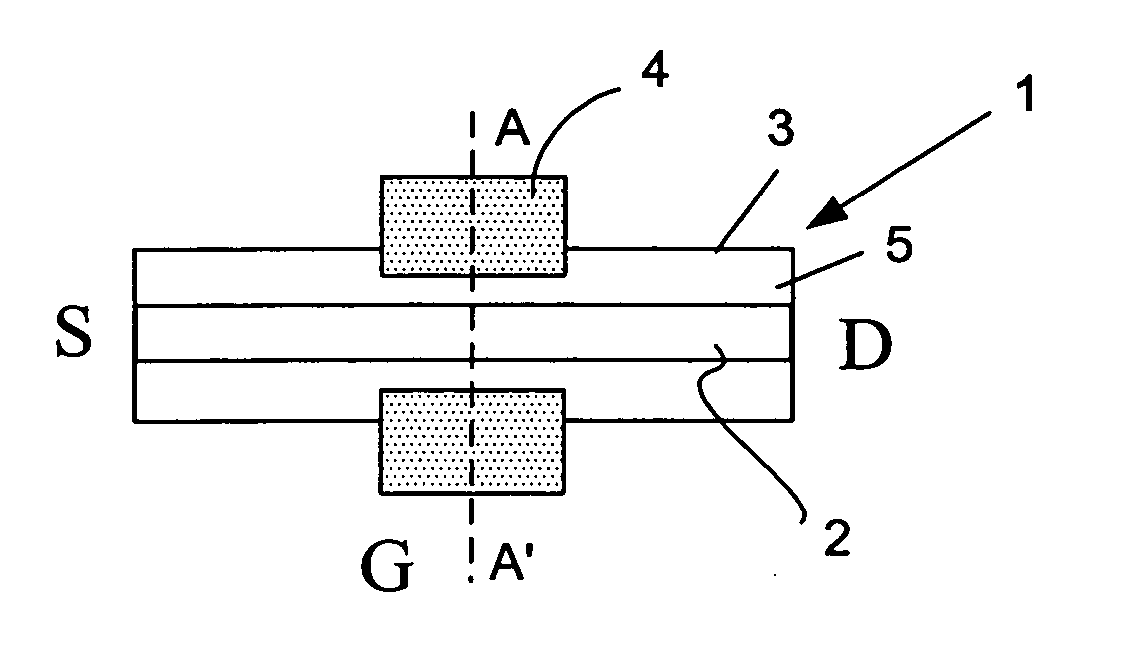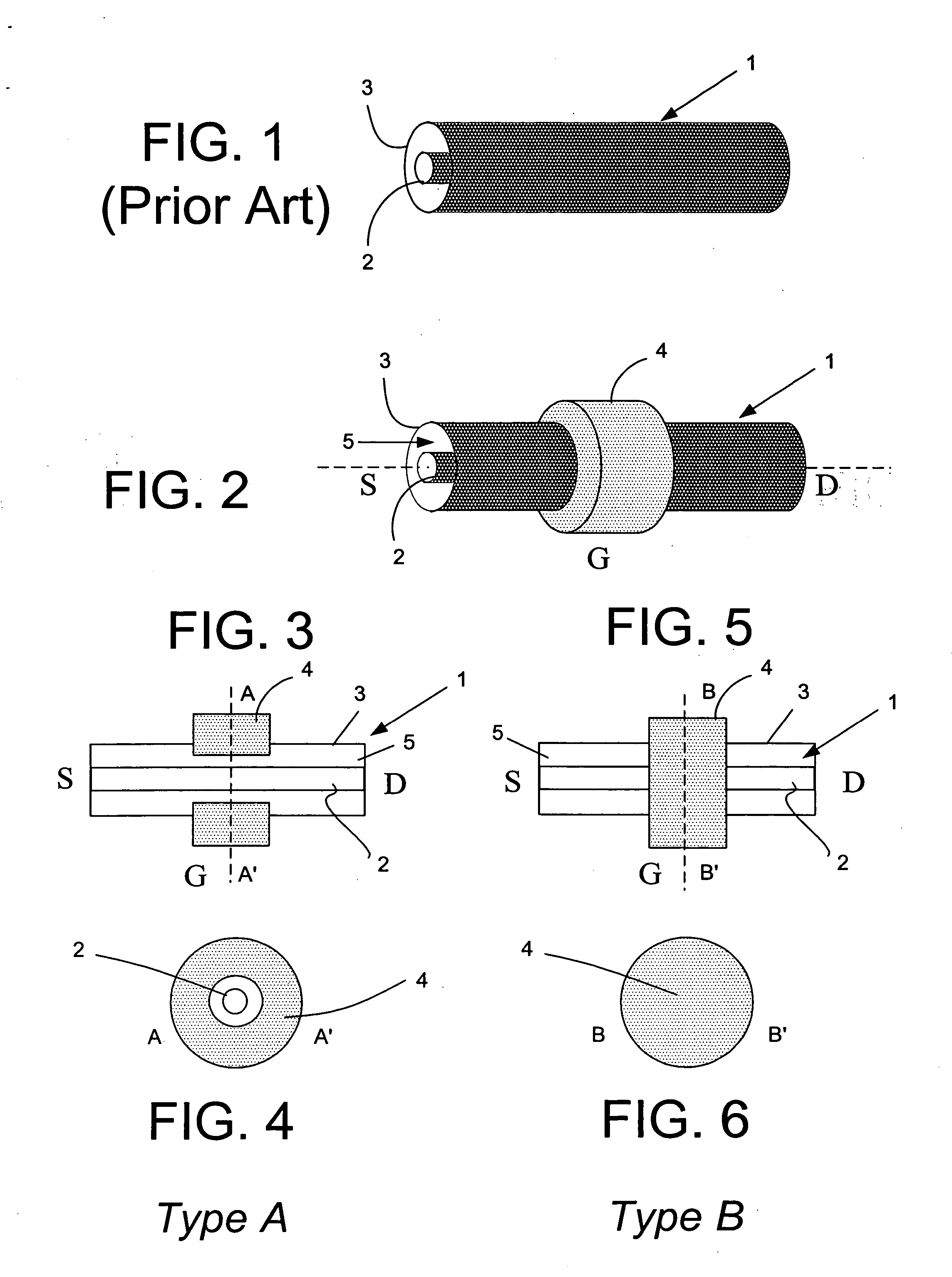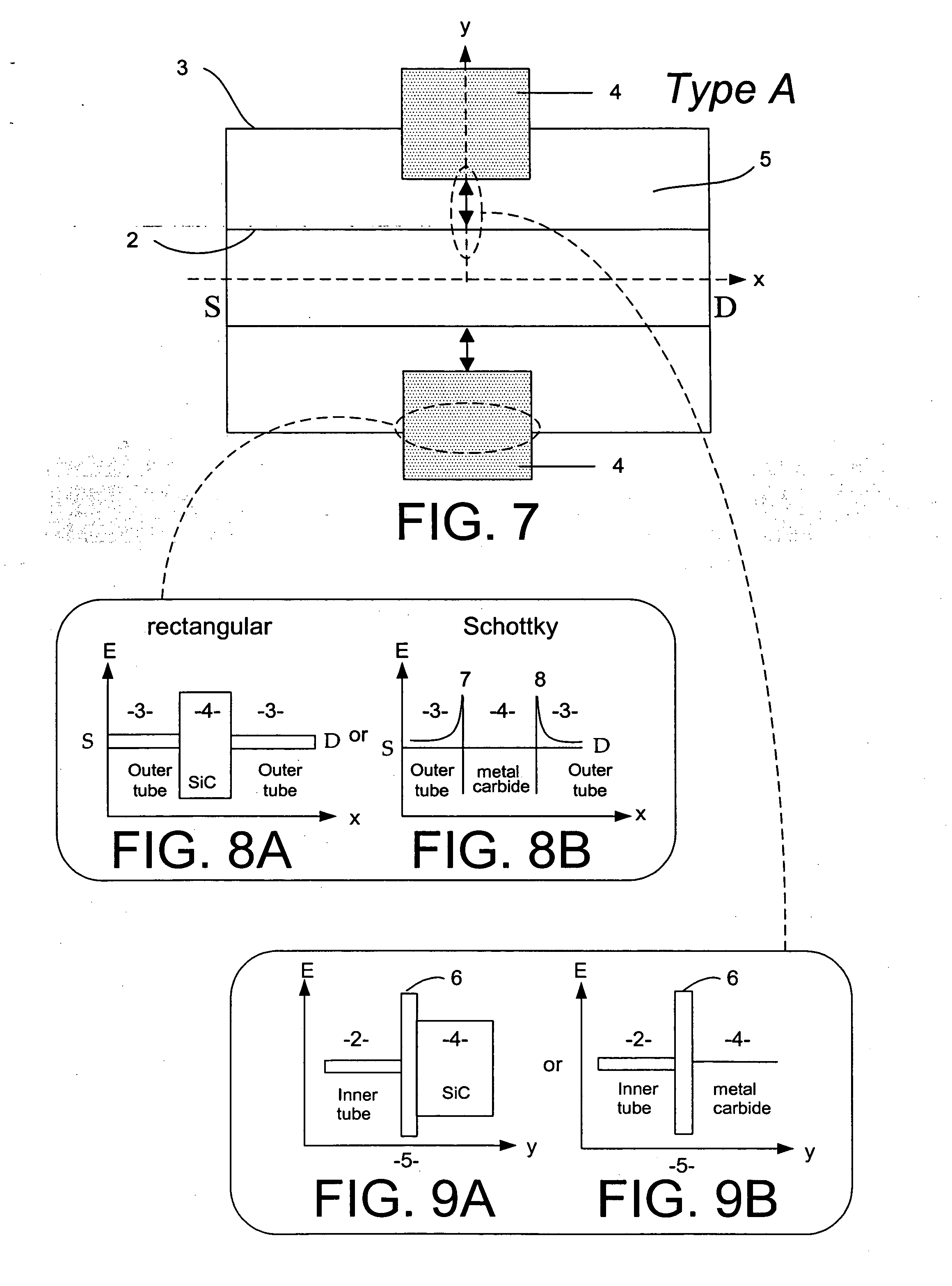Nanotube transistor device
a transistor and nanotube technology, applied in the field of nanotube transistor devices, can solve the problems of lack of reproducibility of devices, inability to yield consistent device characteristics, and inability to demonstrate devices described so far to achieve consistent device characteristics
- Summary
- Abstract
- Description
- Claims
- Application Information
AI Technical Summary
Benefits of technology
Problems solved by technology
Method used
Image
Examples
Embodiment Construction
[0051] Overview
[0052]FIG. 1 illustrates a conventional nanotube structure formed according to any one of the previously described known methods. In this example, nanotube structure 1 comprises first and second generally concentric nanotubes 2, 3 fabricated e.g. from a graphene sheet. The diameters of the tubes 2, 3 are on a nanometer scale, as previously described. In this example, two nanotubes are shown although in practice, the nanotube structure 1 may include only one or many such nanotubes, one within the other.
[0053]FIG. 2 illustrates how such a nanotube structure can be modified so as to form the basis of a transistor in accordance with the invention. The energy bandgap and / or the band profile of the nanotube structure 1 is modified locally in region 4 so as to modify the electrical properties of the nanotube structure 1. The resulting structure provides a channel between source and drain regions S, D and the characteristics of the modified region are controlled by a gate G...
PUM
 Login to View More
Login to View More Abstract
Description
Claims
Application Information
 Login to View More
Login to View More - R&D
- Intellectual Property
- Life Sciences
- Materials
- Tech Scout
- Unparalleled Data Quality
- Higher Quality Content
- 60% Fewer Hallucinations
Browse by: Latest US Patents, China's latest patents, Technical Efficacy Thesaurus, Application Domain, Technology Topic, Popular Technical Reports.
© 2025 PatSnap. All rights reserved.Legal|Privacy policy|Modern Slavery Act Transparency Statement|Sitemap|About US| Contact US: help@patsnap.com



